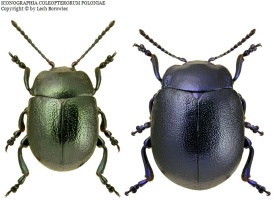Підтримуємо Вільну Україну
 We Support Free Ukraine
We Support Free Ukraine

Biodiversity Map
Taxa

Ovostoma — subordinate taxa:
Taxon count: 1
-
Arthropodaphylum
Click to switch
to select orders
and filters > -
Hexapodasubphylum
Click to switch
to select orders
and filters > -
Insectaclass
Click to switch
to select orders
and filters > -
Coleopteraorder
Click to set
as the main taxon
and as a base
← of the left panel > -
Polyphagasuborder
Click to set
as the main taxon
and as a base
← of the left panel > -
Cucujiformiaseries
Click to set
as the main taxon
and as a base
← of the left panel > -
Chrysomeloideasuperfamily
Click to set
as the main taxon
and as a base
← of the left panel > -
Chrysomelidaefamily
Click to set
as the main taxon
and as a base
← of the left panel > -
Chrysomelinaesubfamily
Click to set
as the main taxon
and as a base
← of the left panel > -
Doryphorinitribe
Click to set
as the main taxon
and as a base
← of the left panel > -
Chrysolininasubtribe
Click to set
as the main taxon
and as a base
← of the left panel > -
Chrysolinagenus
Click to set
as the main taxon
and as a base
← of the left panel > -
Ovostomasubgenus
Click to set
as the main taxon
and as a base
← of the left panel > -
Chrysolina olivierispecies
Click to set
as the main taxon
and as a base
← of the left panel >
PL
NO
name status: valid name
BioMap ID: 1024690
taxon code: d4369
taxonomy checked: YES
Data on distribution in Poland

Statistics
- Records: 4
- Publications: 1
- Collections: 3
- Publication authors: 1
- Illustrations (iconography): 1
- Photos (specimen/observation): lacking
Taxon description
[KFP 4369: Chrysolina olivieri] Gatunek obejmujący zasięgiem Alpy, Karpaty, góry Półwyspu Bałkańskiego oraz ich przedgórza. Gatunek ten ma tworzyć dwa podgatunku z których Ch. (O.) olivieri slovaca Bech. ma występować w Karpatach Zachodnich, a pozostałą część areału gatunkowego ma zasiedlać podgatunek nominotypowy. Faktyczne rozmieszczenie tych podgatunków w naszym kraju nie jest dotychczas wyjaśnione. Według dotychczasowych danych z piśmiennictwa omawiany gatunek był notowany z 7 krain południowych, przy czym błędnie z Wyżyny Krakowsko-Wieluńskiej i Bieszczadów. A. Warchałowski (1973) podał, że omawiany gatunek był łowiony pod Krakowem, opierając się prawdopodobnie na danych B. Kotuli (1874), ale autor ten wykazał go tylko z Drohobycza (obecnie USRR). Wzmianka o złowieniu tego chrząszcza w Bieszczadach (Warchałowski 1973) oparta była na informacji M. Węgrzeckiego (1963) o znalezieniu Ch. coerulea (Oliv.) w Komańczy, ale okazy dowodowe z tego stanowiska według L. Borowca (1984) należą jednak do Ch. (O.) globipennis (Suffrian). Bionomia tego gatunku poznana fragmentarycznie; postacie dojrzałe poławiano na szałwi lepkiej — Salvia glutinosa L.
Illustrations
... browse
 Chrysolina
Chrysolinaolivieri
olivieri
External data sources
- Ostatnie rekordy
-
568843
 ⊡
⊡ Chrysomelidae: Chrysolina olivieri olivieri, PL, Beskid Zachodni, Rytro, UTM DV78, 1902, leg. W. Mączyński, coll. Muz. Górnośląskie, Bytom: Mączyński (Borowiec 1992b)
Chrysomelidae: Chrysolina olivieri olivieri, PL, Beskid Zachodni, Rytro, UTM DV78, 1902, leg. W. Mączyński, coll. Muz. Górnośląskie, Bytom: Mączyński (Borowiec 1992b) -
496121
 ⊡
⊡ Chrysomelidae: Chrysolina olivieri olivieri, PL, Bieszczady, Mików, UTM EV86, 1997, leg. A. Lasoń
Chrysomelidae: Chrysolina olivieri olivieri, PL, Bieszczady, Mików, UTM EV86, 1997, leg. A. Lasoń -
496120
 ⊡
⊡ Chrysomelidae: Chrysolina olivieri olivieri, PL, Bieszczady, Mików, UTM EV86, 1997, leg. A. Lasoń
Chrysomelidae: Chrysolina olivieri olivieri, PL, Bieszczady, Mików, UTM EV86, 1997, leg. A. Lasoń -
482910
 ×
× Chrysomelidae: Chrysolina olivieri olivieri, PL, coll. ISEZ PAN
Chrysomelidae: Chrysolina olivieri olivieri, PL, coll. ISEZ PAN - ... more
- Powiązane publikacje
-
Borowiec L. 1992b. The leaf-beetles in the collection of Wojciech Mączyński (1860-1911) (Coleoptera: Chrysomelidae). Ann. Upper Siles. Mus., Ent., 3:3-29.
 Show records
Show records
- Powiązane zbiory
-
ISEZ PAN
 Show records
Show records -
Muz. Górnośląskie, Bytom: Mączyński
 Show records
Show records -
Lasoń A.
 Show records
Show records
- Powiązani autorzy
-
Borowiec L.
 Show records
Show records





